By Chrissy Moore
 One of the enchanting things about working in the National Herb Garden is the myriad people I meet from around the world. Ne’er a week goes by that I don’t see or get to speak with someone personally from another country. I’m often brazen enough to confront people directly and, figuratively speaking, “pat them down” for herbal information from their homeland!
One of the enchanting things about working in the National Herb Garden is the myriad people I meet from around the world. Ne’er a week goes by that I don’t see or get to speak with someone personally from another country. I’m often brazen enough to confront people directly and, figuratively speaking, “pat them down” for herbal information from their homeland!
Just such an opportunity presented itself this past summer. As I was sitting on a bench awaiting my coworker for a brief meeting, I noticed a woman and her teenage daughter walking through the garden. I got up the nerve to ask her where they were from. The mother was Thai, while her daughter was Thai/Maltese, the father being from Malta. I asked the mother (her name was Dao), if I could inquire about plants from her homeland, and so began her almost two-hour tour around the garden…the garden that I have worked in for over 25 years! Whoever said you “learn new things every day” wasn’t lying. Dao enthusiastically recounted stories of how the people from her village used such-and-such plant “back when I grew up and we had no electricity!”
While not all of the plants she discussed with me are currently in our inventory, I learned that they should be, and I’ll do my darndest to find them. But, mostly, she pointed out the plants that we already had, so I’ll start with a popular fruit tree, Carica papaya.
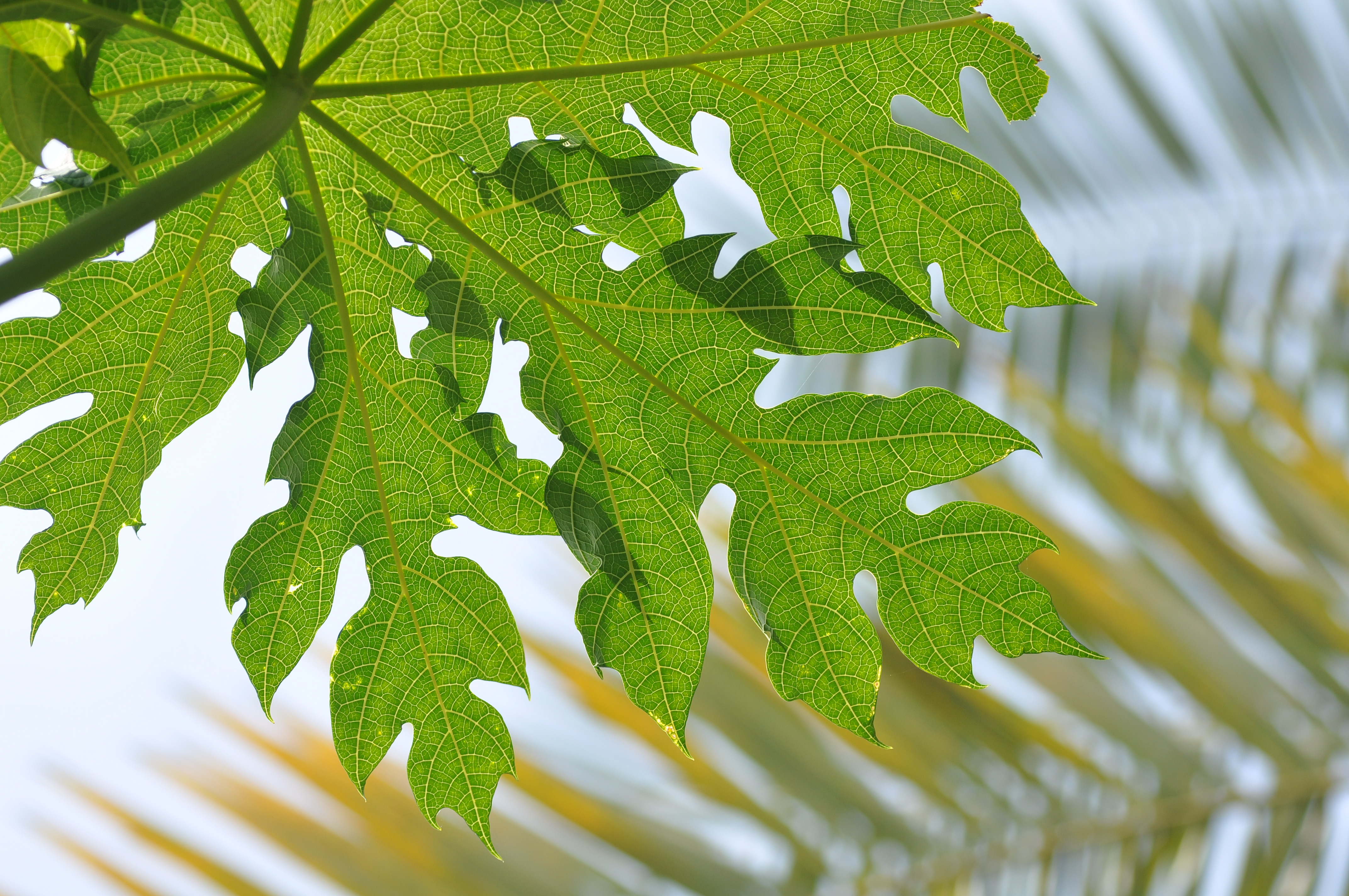 Papaya is a small tree, relatively speaking, growing to about 30 feet tall. Interestingly, it only lives for five to ten years, which is pretty short in tree years. It has deeply lobed leaves reminiscent of fig leaves (Ficus carica), hence the obvious relationship with fig’s specific epithet. Generally, Carica is dioecious, meaning the male and female flowers are on separate trees, and the tree will start bearing fruit in one year to 18 months from seed. The resulting fruit can be anywhere from three to 20 inches long and can weigh in at a hefty 20 – 25 lbs! The fruit’s skin turns from green to yellow when ripe, and the flesh is a lovely tropical yellow to orange and is filled with hundreds of wrinkly black seeds (Britannica, 2022). While most people consume just the papaya flesh or juice, there’s no need to throw those seeds away; they have a strong, pepper-like flavor and can be used as a spice in various culinary preparations.
Papaya is a small tree, relatively speaking, growing to about 30 feet tall. Interestingly, it only lives for five to ten years, which is pretty short in tree years. It has deeply lobed leaves reminiscent of fig leaves (Ficus carica), hence the obvious relationship with fig’s specific epithet. Generally, Carica is dioecious, meaning the male and female flowers are on separate trees, and the tree will start bearing fruit in one year to 18 months from seed. The resulting fruit can be anywhere from three to 20 inches long and can weigh in at a hefty 20 – 25 lbs! The fruit’s skin turns from green to yellow when ripe, and the flesh is a lovely tropical yellow to orange and is filled with hundreds of wrinkly black seeds (Britannica, 2022). While most people consume just the papaya flesh or juice, there’s no need to throw those seeds away; they have a strong, pepper-like flavor and can be used as a spice in various culinary preparations.
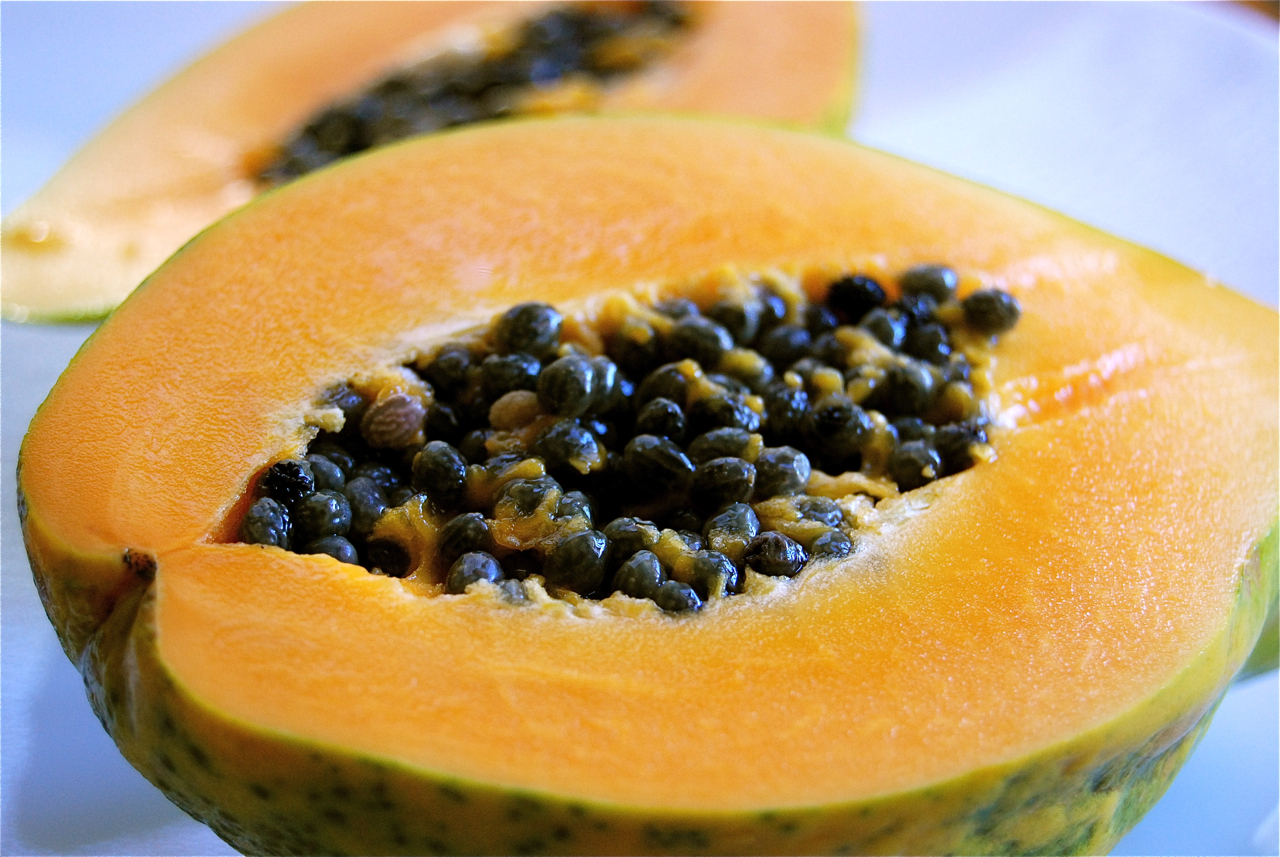 The juice can be found in numerous commercial brands, particularly those from Latin and South America. In fact, papaya is native to Central and South America, not Southeast Asia, which may seem odd given this article is about Thai herbs. Let’s just say that papaya is well-traveled (unlike me). It has a long history of being moved from one country to another, then to another, each time being propagated, and then shipped off again to yet another tropical part of the world. The Spanish chronicler, Oviedo, first described Carica papaya in 1526 A.D. In the early 1600s, Spanish explorers to the New World carried the seed to Panama and the Dominican Republic. From the Caribbean, Spanish and Portuguese sailors carried the seeds to Southeast Asia and India, to Australia and even to Italy. Between 1800 – 1820, papaya was sent on to Hawaii, and by 1900, papaya had come all the way back to the New World, landing in Florida. In all of these locations, it was introduced as a plantation, or agricultural, crop (TFNetwork, 2016). “Papaya has become an important agricultural export for developing countries, where export revenues of the fruit provide a livelihood for thousands of people, especially in Asia and Latin America” (Evans and Ballen, 2018).
The juice can be found in numerous commercial brands, particularly those from Latin and South America. In fact, papaya is native to Central and South America, not Southeast Asia, which may seem odd given this article is about Thai herbs. Let’s just say that papaya is well-traveled (unlike me). It has a long history of being moved from one country to another, then to another, each time being propagated, and then shipped off again to yet another tropical part of the world. The Spanish chronicler, Oviedo, first described Carica papaya in 1526 A.D. In the early 1600s, Spanish explorers to the New World carried the seed to Panama and the Dominican Republic. From the Caribbean, Spanish and Portuguese sailors carried the seeds to Southeast Asia and India, to Australia and even to Italy. Between 1800 – 1820, papaya was sent on to Hawaii, and by 1900, papaya had come all the way back to the New World, landing in Florida. In all of these locations, it was introduced as a plantation, or agricultural, crop (TFNetwork, 2016). “Papaya has become an important agricultural export for developing countries, where export revenues of the fruit provide a livelihood for thousands of people, especially in Asia and Latin America” (Evans and Ballen, 2018).
 Today, Mexico has moved into first place as the number one exporter of papaya, with virtually all of its exports going to the United States, which “ranks as the largest importer of papayas globally” (FAO, 2021). Who knew?! So, I guess it isn’t that surprising that it was here in the United States–not Thailand–that I met Dao who shared with me about one of the most popular tropical plants in her home country, as well as mine.
Today, Mexico has moved into first place as the number one exporter of papaya, with virtually all of its exports going to the United States, which “ranks as the largest importer of papayas globally” (FAO, 2021). Who knew?! So, I guess it isn’t that surprising that it was here in the United States–not Thailand–that I met Dao who shared with me about one of the most popular tropical plants in her home country, as well as mine.
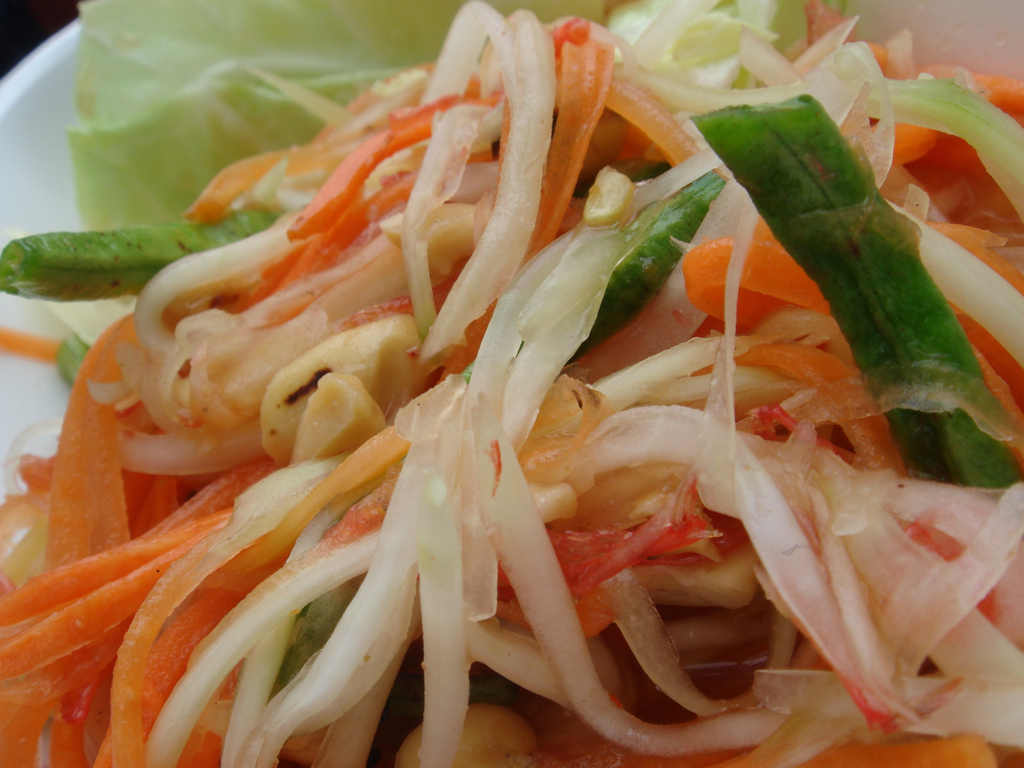 According to Dao, the green (unripe) fruit is used as a vegetable to make papaya salad, and it can also be fried with meat. If boiled with meat, it makes the meat softer and more moist. The leaves, she explained, are eaten in Cambodia, Thailand, and Laos, where they are cut and fried or eaten raw. Medicinally, papaya is considered by many Thai as an old-fashioned remedy good for the body, diabetes, and cancer. The leaf juice was/is used to treat intestinal cancer, and the ripe fruit is good for relieving constipation (personal communication).
According to Dao, the green (unripe) fruit is used as a vegetable to make papaya salad, and it can also be fried with meat. If boiled with meat, it makes the meat softer and more moist. The leaves, she explained, are eaten in Cambodia, Thailand, and Laos, where they are cut and fried or eaten raw. Medicinally, papaya is considered by many Thai as an old-fashioned remedy good for the body, diabetes, and cancer. The leaf juice was/is used to treat intestinal cancer, and the ripe fruit is good for relieving constipation (personal communication).
Much of this makes perfect sense when you analyze the chemical constituents of papaya. It is rich in antioxidants, vitamins, and fiber (UFL/IFAS, 2016). The Tropical Fruit Network states, “Furthermore, papaya also contains [potassium, copper, phosphorus, iron, and manganese], carotenes, flavonoids, folate and pantothenic acid, and also fiber. These nutrients help to promote a healthy cardiovascular system and provide protection against colon cancer. Fiber has been shown to lower cholesterol level[s] in [the] human body. Papaya and its seeds have proven anti-parasitic and anti-amoebic activities, and their consumption offers a cheap, natural, harmless, readily available preventive strategy against intestinal parasites.” What scientists have lately confirmed, the people of Thailand have been putting into practice for centuries.
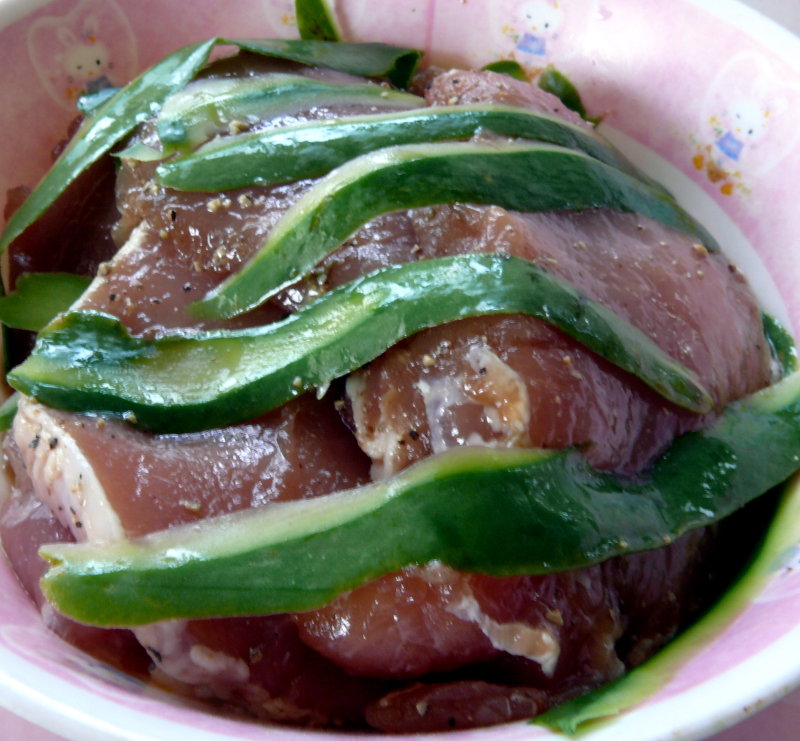 Both the papaya leaves and the fruit’s skin produce a latex substance from which a digestive enzyme called papain can be obtained. Papain is similar to the human digestive enzyme pepsin, and thus, is an effective plant-based meat tenderizer, “useful in digesting or coagulating, clotting, and converting proteins into smaller parts” (Tyler et al., 1988). (Bromelain, an enzyme from pineapples, is used similarly.) Hence, the Thai method of mixing papaya with meat effectively tenderizes the meat during the cooking process. (Note: If one has a latex allergy, caution should be used.)
Both the papaya leaves and the fruit’s skin produce a latex substance from which a digestive enzyme called papain can be obtained. Papain is similar to the human digestive enzyme pepsin, and thus, is an effective plant-based meat tenderizer, “useful in digesting or coagulating, clotting, and converting proteins into smaller parts” (Tyler et al., 1988). (Bromelain, an enzyme from pineapples, is used similarly.) Hence, the Thai method of mixing papaya with meat effectively tenderizes the meat during the cooking process. (Note: If one has a latex allergy, caution should be used.)
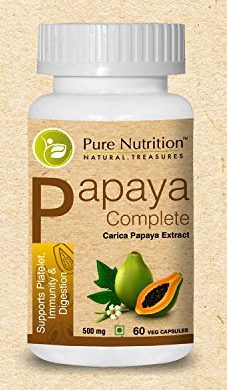 Such uses transcend “old-fashioned” methods by including modern applications as well. Papain is used in some contact lens cleaning solutions (Tyler et al., 1988), as well as in the production of products like chewing gum, shampoo and soap, beer, in drug and anti-bacterial preparations for some digestive ailments, and in wound care. Papaya extracts are also effective in the textile industry for “degumming silk and softening of wool” (TFNetwork, 2016). In 2021, the Memorial Sloan Kettering Cancer Center also noted on their website that “papaya leaves and their extracts are sold as dietary supplements to improve the immune system and increase platelet counts….A few clinical studies found benefits of papaya leaf extract in treating dengue fever and in increasing platelet counts,” though they suggested that more studies were needed.
Such uses transcend “old-fashioned” methods by including modern applications as well. Papain is used in some contact lens cleaning solutions (Tyler et al., 1988), as well as in the production of products like chewing gum, shampoo and soap, beer, in drug and anti-bacterial preparations for some digestive ailments, and in wound care. Papaya extracts are also effective in the textile industry for “degumming silk and softening of wool” (TFNetwork, 2016). In 2021, the Memorial Sloan Kettering Cancer Center also noted on their website that “papaya leaves and their extracts are sold as dietary supplements to improve the immune system and increase platelet counts….A few clinical studies found benefits of papaya leaf extract in treating dengue fever and in increasing platelet counts,” though they suggested that more studies were needed.
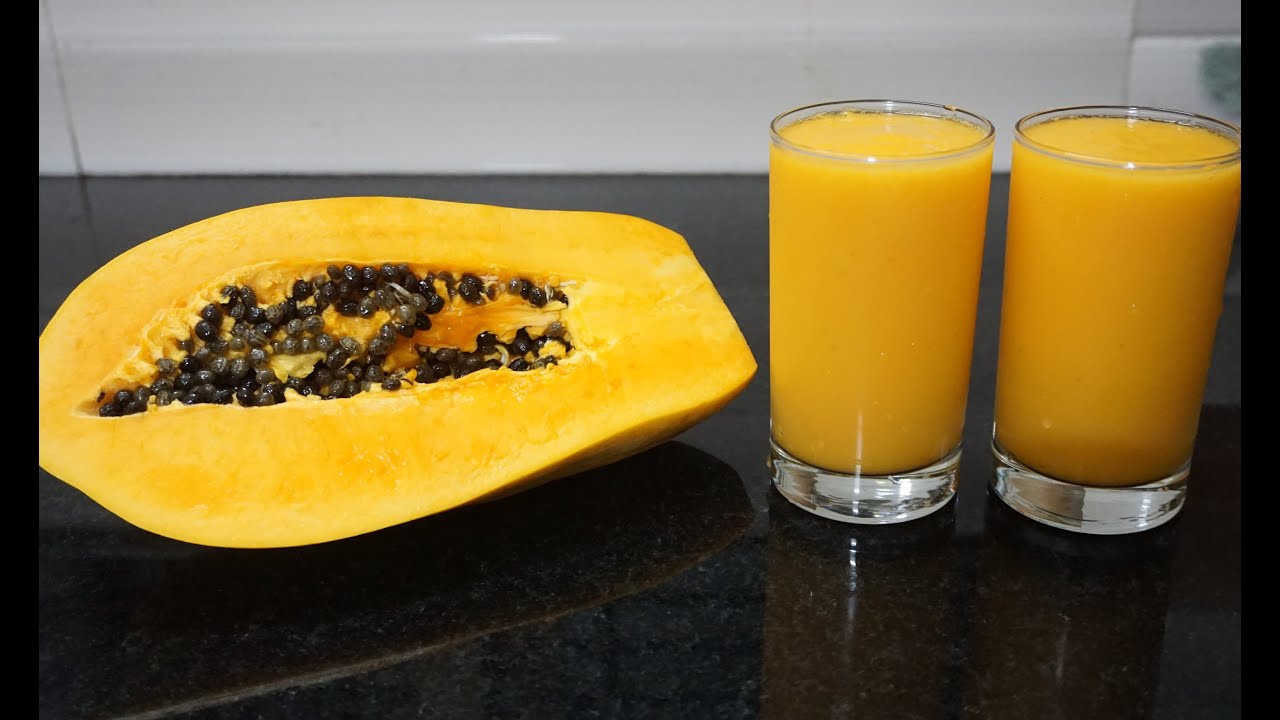 In my small world, papaya has always been “that fruit” (or juice) that I’ve never actually tried and for no particular reason. Fortunately for me, I learned something new that day–that papaya is not just a one-trick pony as I had previously thought; there are plenty of ways this plant is useful to humans, especially for people like Dao from Thailand. Having the opportunity to speak with people like her who have such personal relationships with many of the herbs we grow in the National Herb Garden never gets old!
In my small world, papaya has always been “that fruit” (or juice) that I’ve never actually tried and for no particular reason. Fortunately for me, I learned something new that day–that papaya is not just a one-trick pony as I had previously thought; there are plenty of ways this plant is useful to humans, especially for people like Dao from Thailand. Having the opportunity to speak with people like her who have such personal relationships with many of the herbs we grow in the National Herb Garden never gets old!
Medicinal Disclaimer: It is the policy of The Herb Society of America, Inc. not to advise or recommend herbs for medicinal or health use. This information is intended for educational purposes only and should not be considered as a recommendation or an endorsement of any particular medical or health treatment. Please consult a health care provider before pursuing any herbal treatments.
Photo Credits: 1) Carica papaya immature tree with fruit (Creative Commons, Bmdavll@EnglishWikipedia); 2) Papaya leaf (Creative Commons, Marufish); 3) Ripe papaya fruit with seeds (Creative Commons, love.jsc); 4) 1671 etching of Carica papaya trees (Public Domain); 5) Thai papaya salad (Creative Commons, Ken2754@yokohama); 6) Strips of papaya being used as a meat tenderizer (Creative Commons, Thai Food Blog); 7) Papaya extract (Public Domain); 8) Papaya fruit and juice (Bincy Lenin’s Kitchen, youtube).
References
Britannica Online. 2022. Papaya. Accessed 28 Dec 2022. https://www.britannica.com/plant/papaya.
Evans, Edward A. and Fredy H. Ballen. 2018. An overview of global papaya production, trade, and consumption. University of Florida, Food and Resource Economics Department, Institute of Food and Agricultural Sciences Extension. Accessed 12 Dec 2022. https://edis.ifas.ufl.edu/publication/FE913.
Food and Agriculture Organization of the United Nations. 2021. International Trade Major Tropical Fruits: preliminary results 2021, p. 13. Accessed 28 Dec 2022. https://www.fao.org/3/cb9412en/cb9412en.pdf
Memorial Sloan Kettering Cancer Center. 2021. Papaya leaf: Purported benefits, side effects, and more. Accessed 7 Jan 2023. https://www.mskcc.org/cancer-care/integrative-medicine/herbs/papaya-leaf
Tyler, Varro E., Lynn Brady, and James Robbers. 1988. Pharmacognosy. 9th Edition. Philadelphia: Lea & Febiger.
TFNet News Compilation. 2016. Papaya – Introduction. International Tropical Fruits Network. Accessed 28 Dec 2022. https://www.itfnet.org/v1/2016/05/papaya-introduction/
Chrissy Moore is the curator of the National Herb Garden at the U.S. National Arboretum in Washington, DC. Aside from garden maintenance in the NHG, Chrissy lectures, provides tours, and writes on various herbal topics. She serves as co-blogmaster of The Herb Society’s blog and is a member of the Potomac Unit of The Herb Society of America. Chrissy is also an International Society of Arboriculture certified arborist. When not doing herbie things, she can be found looking after many horses.

